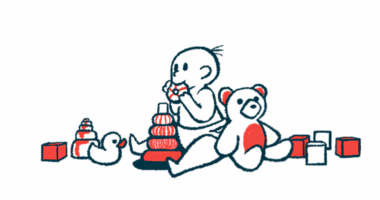Rejection is a risk worth taking, even in the context of hemophilia
Good health is not the ultimate goal, I've found; the ability to experience life is

Ever since turning 30, I’ve been on a fast track toward self-improvement, determined to get the most out of life. I want to experience things meaningfully with my husband and daughter, doing things that bring me joy and fulfillment. But lately I’ve been feeling a bit disconnected from myself. That’s what drew me to one of Joey Schweitzer’s YouTube videos, including one titled “10 ways to stop ruining your life.”
Two points in the video really struck me: setting meaningful goals and learning to take risks. Schweitzer says that goals give us something to strive toward and add meaning to our lives. In my case, I realized that I’d already set some goals. While reading a book to help with my attention-deficit/hyperactivity disorder (ADHD), I performed an activity that would help me define my core values. But while I knew what I valued, I still struggled to turn that into tangible goals in my daily life.
Another point Schweitzer made that resonated with me was about “stepping out of the cave” — stepping outside of our comfort zones, meeting new people, collecting experiences, and creating more than we consume. As someone who may unwittingly withdraw into her shell when things get tough, I understand the appeal of staying in the cave. But if there’s one person who’s taught me how to step out of it, it’s my husband, Jared, who manages to live both gracefully and boldly with severe hemophilia B.
The risks of living with hemophilia
Something Schweitzer said about risk-taking felt particularly relevant to our journey:
“Life is inherently risky. … There are so many things that could go wrong. … [But] you feel pain anyways, so why not feel the pain of trying and failing instead of the pain of apathy and despair and neglect?”
Living with hemophilia often means facing the risk of rejection — not just from others, but from your own body. A person with hemophilia has to navigate the fine line between taking calculated risks and safeguarding their health. Even with modern treatments, the fear of bleeding can feel paralyzing. Yet Jared has made a conscious decision to embrace certain risks. For him, the pain of staying “safe” (a relative term!) would mean denying himself the fullness of life.
I’ve written about the concept of zero-risk bias, which is the human tendency to avoid risk at all costs, even when it means missing out on potentially rewarding opportunities. For people with hemophilia, zero-risk bias can manifest in various ways, such as avoiding sports, physical activities, or even social interactions out of fear. The thought of bleeding can make a person so risk-averse that they miss out on the joy of living.
Jared, however, is the embodiment of someone who’s learned to step out of the cave. He’s found ways to embrace physical activities such as weightlifting, plyometrics, and swimming while taking the necessary precautions. He’s dealt with bleeding episodes after pushing himself, but instead of beating himself up over them, he sees these moments as “empowering rejections” — reminders that while his body might not always cooperate, it doesn’t mean he should stop trying.
Calculated risks can lead to fulfillment
Jared’s experience has taught me that taking risks doesn’t have to mean recklessness; it’s about evaluating what has a reasonable upside and a manageable downside. For example, trying a new sport with protective gear and a well-thought-out emergency plan is a reasonable risk for many who have hemophilia. Even if it results in a minor bleed, the joy of participation can outweigh the pain. That’s the kind of empowering rejection I’ve seen Jared embrace again and again.
It’s crucial to take care of one’s health, but it’s far more important to remember what that good health is for — to experience life. Hemophilia shouldn’t mean living in a bubble. Sure, it’s risky to step out and be seen as “different” — or in Jared’s case, to experience pain from a minor bleed — but isn’t the real risk living with regrets and never pushing yourself to see what you’re capable of?
Embracing the uncomfortable can develop resilience
If we shy away from risk, we’re guaranteeing something worse: never reaching our fullest potential. As Schweitzer pointed out in his video, “by not taking risks and not getting comfortable with risk … you pretty much guarantee [not getting what you want].” Jared has shown me that it’s better to take risks and face rejection — whether from others or even his own body — and come out of it stronger.
The importance of this message extends beyond hemophilia. It’s an invitation to everyone, regardless of their circumstances, to consider risk as a bridge toward a fuller, more meaningful life — one where we live not in fear, but in acceptance and courage.
Note: Hemophilia News Today is strictly a news and information website about the disease. It does not provide medical advice, diagnosis, or treatment. This content is not intended to be a substitute for professional medical advice, diagnosis, or treatment. Always seek the advice of your physician or another qualified health provider with any questions you may have regarding a medical condition. Never disregard professional medical advice or delay in seeking it because of something you have read on this website. The opinions expressed in this column are not those of Hemophilia News Today or its parent company, Bionews, and are intended to spark discussion about issues pertaining to hemophilia.








Leave a comment
Fill in the required fields to post. Your email address will not be published.